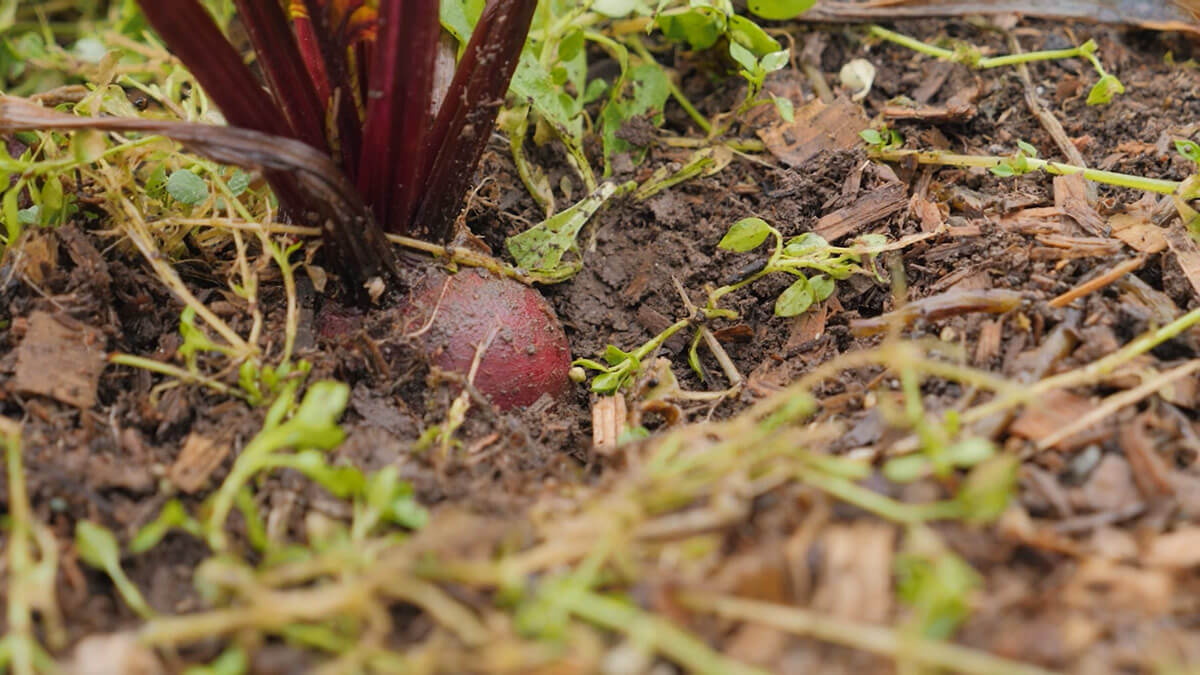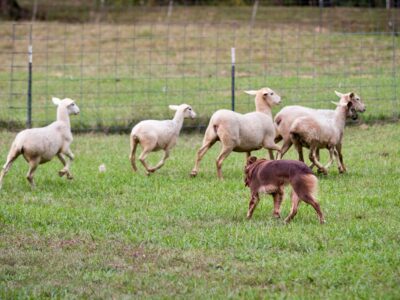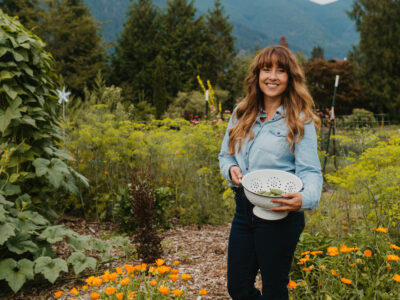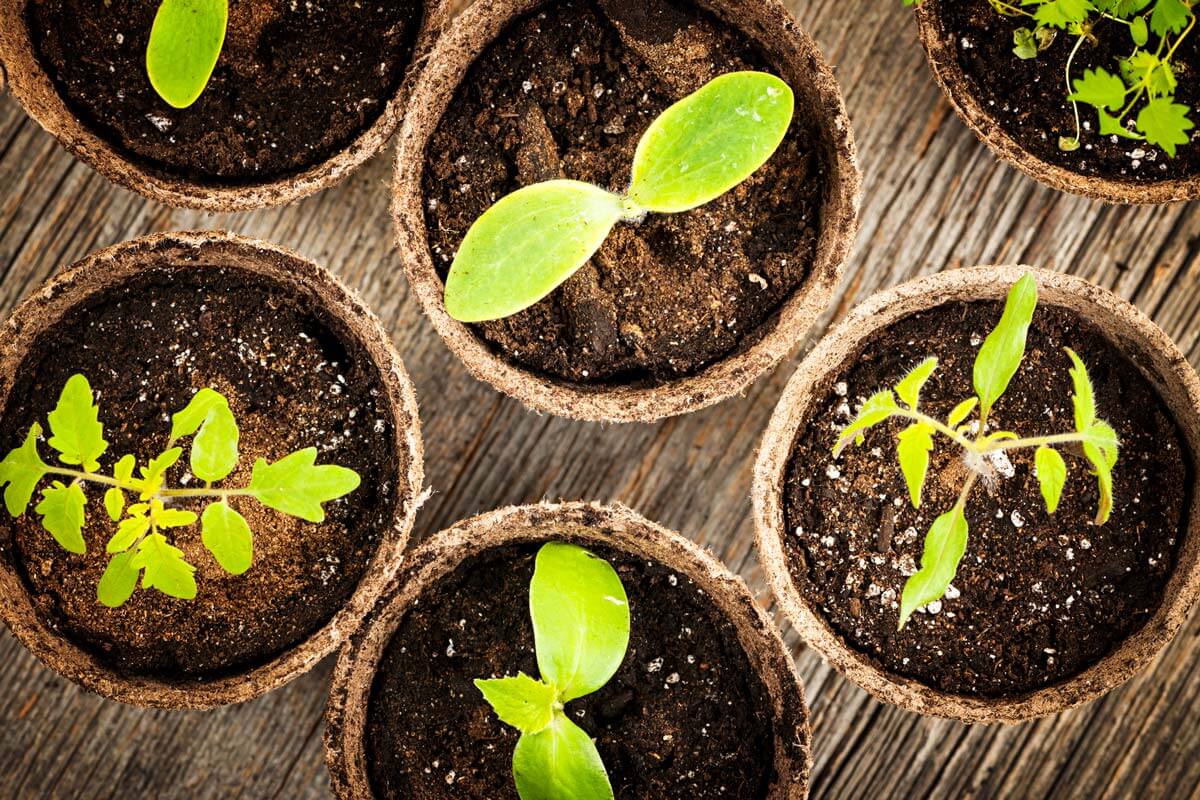I’m often asked if there are vegetables that can winter over in the garden. Root vegetables work best for keeping in your winter vegetable garden, but there are definitely some tips and tricks that will help give you the best success and extend your growing season well into the winter.
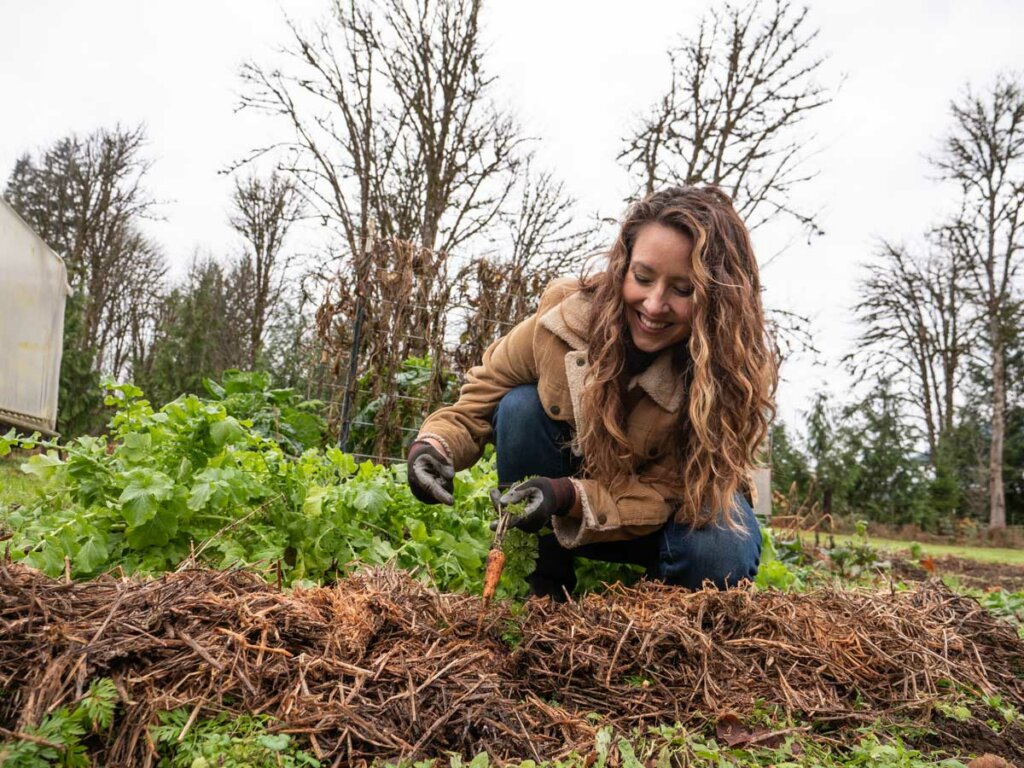
Where I live I’m dealing with a winter vegetable garden zone 7. This means I’ll definitely have some freezing temperatures, but they don’t get so cold that I can’t winter over some of my root vegetables and other lesser-known varieties of crops that store well into December and January… some years all the way into next Spring.
Plus, if you’re like me, you like to plant a late summer garden to continue harvesting fresh produce well into the fall months. You can find out the best 28 crops to plant for your fall garden here.
And be sure you know about the ten things most organic gardeners forget about and the 8 common mistakes made by new gardeners.
For more gardening tips, or to read the transcript of today’s Pioneering Today Podcast (episode #283) be sure to scroll down to the bottom of this post for related articles, videos, and podcasts! Or, click on this link if you’d like to join my Organic Gardening Workshop and get your All-Access pass.
Table of Contents[Hide][Show]
What Vegetables Can Stay in the Garden into Winter?
Root vegetables tend to winter the best, but as you can see from my video above, other crops such as Brussel sprouts, kale, some lettuces, and some cabbages will last well into the winter months. (You can even watch me harvesting Brussel sprouts during a crazy winter storm with over two feet of snow!)
- Beets
- Carrots
- Potatoes
- Brussel Sprouts
- Kale
- Lettuce
- Turnips
- Radishes
Warm Weather Crops vs. Cold Weather Crops
Cold weather crops are vegetables that can tolerate a hard frost. Many root vegetables such as beets, carrots, turnips, kale, and Brussel Sprouts all tolerate very cold temperatures.
Warm weather crops are those we typically think of growing during the summer months; tomatoes, peppers, cucumbers, green beans, summer squash, and even winter squash. These will typically not survive a hard frost.
When to Plant a Winter Vegetable Garden
The term “winter vegetable garden” is a little deceiving because you don’t actually plant these plants in winter. You need to plant them enough ahead of time to become mature plants before the first frost date.
Timing is VERY important and will vary depending on where you live.
If you have my book, The Family Garden Plan or The Family Garden Planner, there are lists of each crop that help you calculate exactly when to plant based on your first frost date (including lists of the good cool, hardy vegetables).
How to Store Vegetables in the Garden
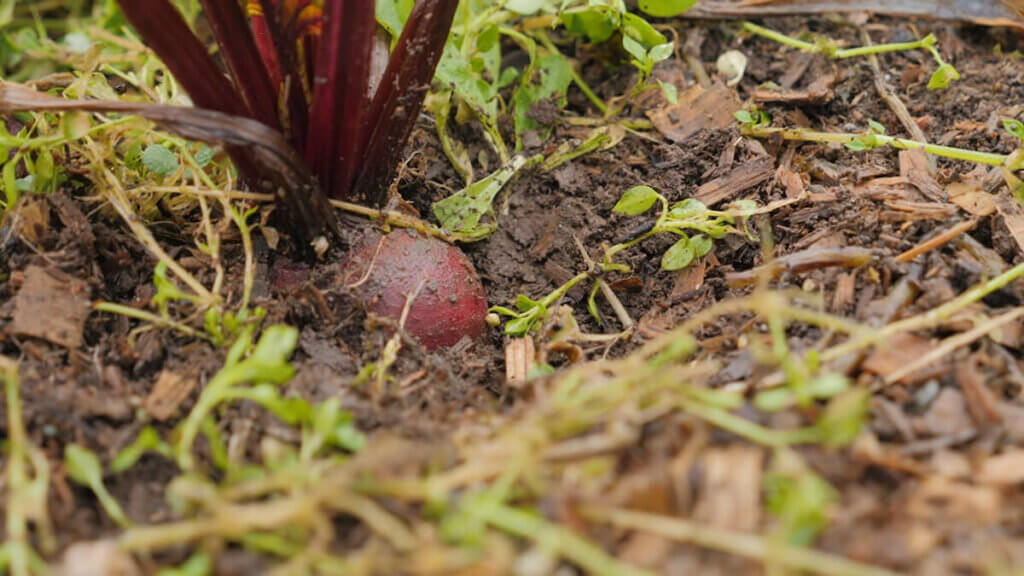
Beets & Radishes
Beets are very hardy, and if they’re tucked away under the surface they’ll store very well in the ground.
Some things to be aware of are, the beet greens will wilt and die back with cold temperatures, but the beetroot itself should keep nicely usually through December.
If any of the beetroots are above the ground, you’ll need to mulch with a nice heavy layer of leaves or straw to keep the beets from freezing.
If the weather continually dips below and above freezing, your soil is going to heave as it freezes and defrosts. This can cause the root crops to get pushed up and out of the soil which is why it’s important to heavily mulch over the beets to keep the top of the root warm.
The beets will not continue to grow if you keep them in the ground. This storage technique works best with beets that have already reached a harvestable size. For more tips on planting and growing beets, check out my blog post.
This is the same method you would use for storing radishes in the garden for winter.
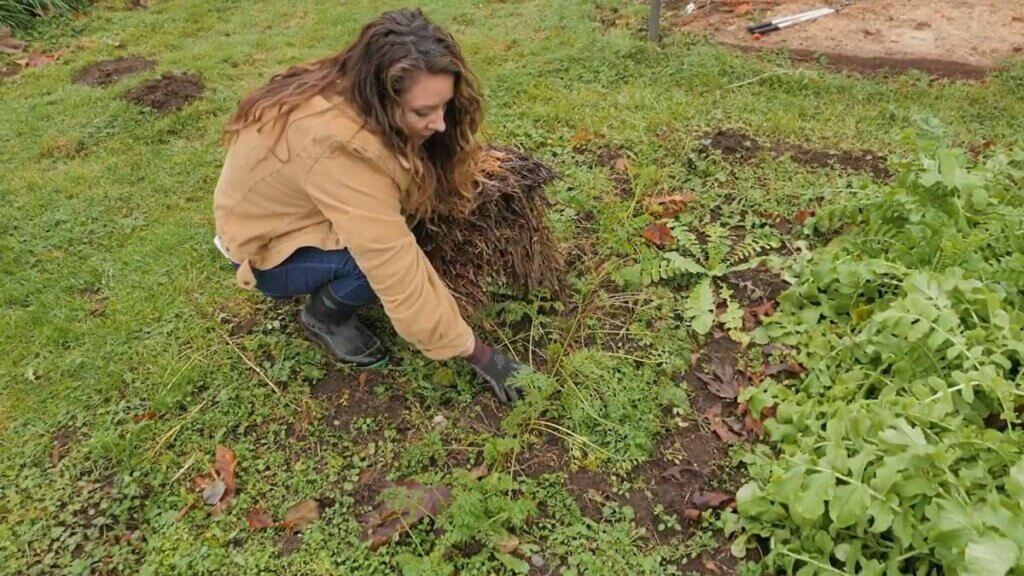
Carrots & Turnips
Mulching over carrots also works very well for keeping them in the garden into the winter months.
As with the beets, the carrots need to be at a decent, harvestable size before mulching and storing in the garden.
Come out and check on them weekly. If they begin to get soft or mushy, it’s time to pull them all up and take them inside.
I’ve been able to successfully harvest and eat fresh carrots well into January!
TIP: If your carrots aren’t very big, you can still mulch them and keep them in the ground to winter over. Because carrots are biennual, they don’t typically produce their seeds until the second year. So leave them in the ground and they’ll actually bloom in the spring and you can harvest the carrot seeds.
This is the same method you would use for storing turnips in the garden for winter.

Potatoes
As the colder temperatures hit your area, your potato plants will die back. But underneath the soil, your potatoes can keep for many months, even through to next spring, if they’re deep enough under a layer of well-draining soil and mulch.
If your soil is clay or has a lot of standing water, this method may not work well for you, even with a thick layer of mulch.
Even though I live in the Pacific Northwest, this method seems to work well for us as our soil drains quite well. I do like to check on my potatoes weekly. If there are any signs of decay I’ll harvest the remainder of them and bring them inside, storing them in the coldest area of my house.
However, many years when I’m preparing my garden for planting in the spring, I’ll find small little potatoes that were missed and they’re still perfectly fine and edible. So this year, I’m going to experiment with layering a little bit extra soil and mulch to see if they’ll last until spring.
Since I don’t have a root cellar, keeping my potatoes in the garden and harvesting them as I need them works best for me.
Check out my other tips for storing vegetables and storing root vegetables without a root cellar.
And if you want to plant potatoes in your garden, be sure to check out my potato planting and growing tips. (Plus, for fun, check out my podcast on Great Depression Era money-saving tips with potatoes!)
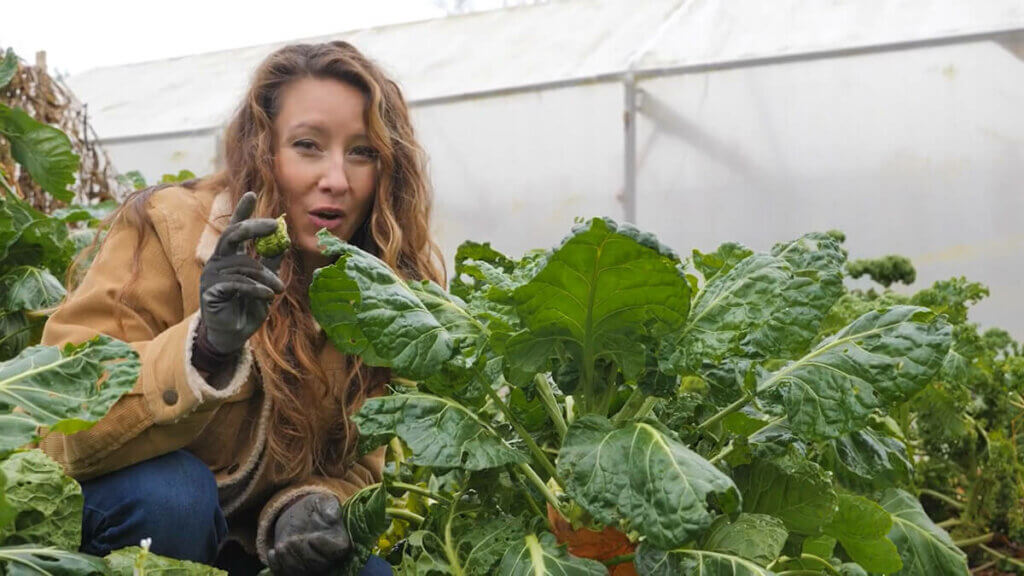
Brussel Sprouts & Cabbage
The beauty of Brussel sprouts is that they’re a very hardy plant that needs no special care into the winter months. I’ve successfully kept them in the garden until February until we got a very large snowfall.
Even better, the flavor of Brussel sprouts improves if they’ve been through a hard frost! So, even if we have Brussel sprouts ready to pick on the stalk, we’ll oftentimes leave them until after the first frost.
Check out my video for my best tips on growing hardy and healthy Brussel sprouts.
What I love about Brussel sprouts is that the smaller sprouts will actually continue to grow in size, even once freezing temperatures arrive.
When I harvest my Brussel sprouts, I harvest them from the bottom up, as the larger sprouts grow first at the bottom of the stalk. This gives the smaller sprouts time to mature a bit more before I harvest them for fresh eating.
Certain varieties of cabbage can also winter over well with no extra care. Be sure to check your seed packets to know whether they’re a good variety for wintering over. In my experience, the cabbages that are more oblong with a pointy top grow best through the winter as they naturally allow the snow to fall off their heads.
Although broccoli and cauliflower will survive through one hard frost, I’ve found the repetitive freezing and warming of temperatures is hard on them and they don’t last long. It’s my recommendation to harvest them just before the first frost to avoid any possible plant loss.
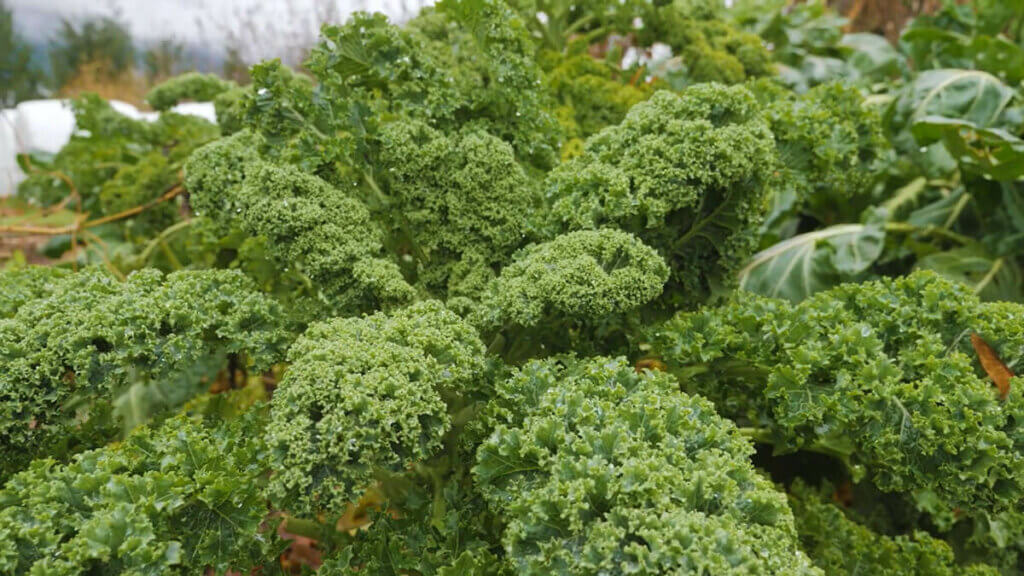
Kale & Lettuce
Kale is just a hardy, hardy vegetable. I’ve wintered over my kale and still harvested it for fresh eating into late spring.
The plants won’t continue to grow, they’ll go into a hibernation mode, but as long as your plants are mature with plenty of leaves, you can harvest those leaves throughout fall, winter and spring until it’s time to plant again.
This year, we planted our kale at the end of May and I’ll be able to continue harvesting them with no extra special care all winter long.
The same goes with many of the heartier lettuces. Be sure to check your seed packets for the best varieties that will grow in your gardening zone.
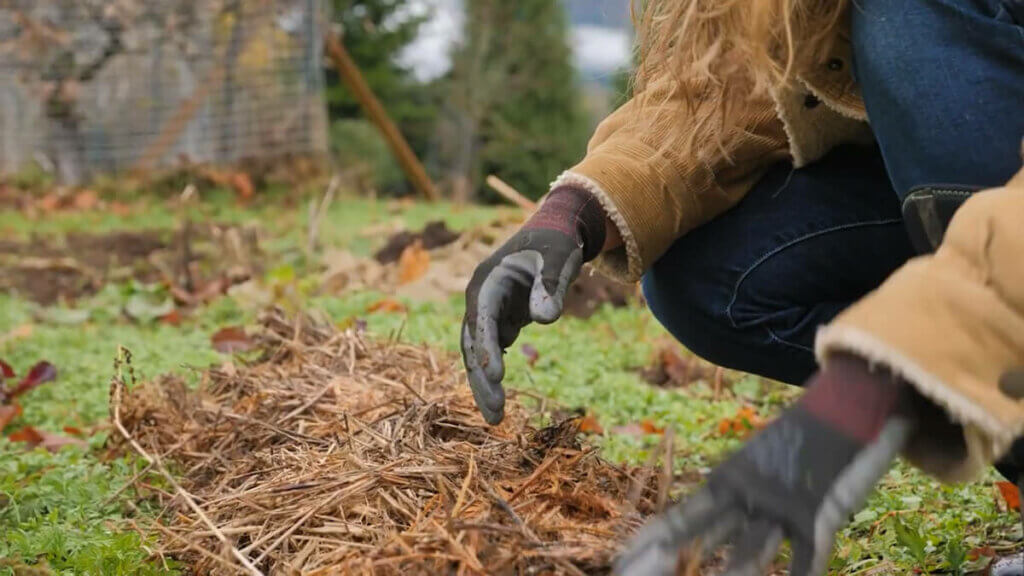
Properly Mulch to Winter Over Your Crops
In order to successfully extend the vegetable harvest into the winter months, you’ll need to add a layer of mulch over the vegetables.
Many people have an abundance of leaves, which is a great way to sheet mulch and build up your soil.
I don’t have enough leaves on hand, so I’m using some straw. My straw was already beginning to break down, but fresh or partly composted straw will work great.
You do need to make sure you can layer at least a few inches deep in order to properly insulate your crops and keep them from freezing.
You can also use hay but I don’t recommend it as hay has a lot more seeds in it than straw (which equals more weeds later).
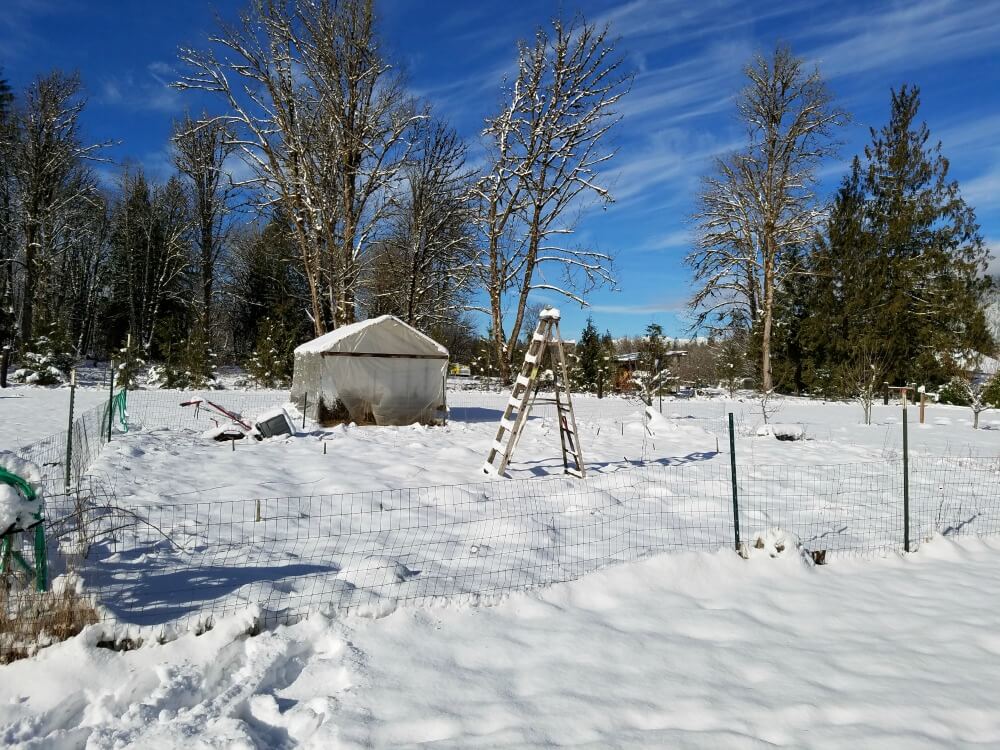
Other Gardening Resources:
- The Family Garden Plan
- Tips to Get Your Homestead Ready for Winter
- The Family Garden Planner
- Organic Gardening Workshop – All Access Pass
- Plant Covers for Cold Weather Gardening – How to Grow Food Year-Round
- How to Improve Soil for Gardening – 3 Easy Tips
- No-Till Gardening Benefits & Getting Started
- Seed Packet Information – How to Read Seed Packets for Gardening Success
- Where to Buy Heirloom Seeds
- Small Space Vegetable Gardening
- Raised Bed Gardening Tips
[fusebox_transcript]
